After subpar start, has the real Jason Kipnis emerged this season?

Three days before the start of Cleveland’s 2015 season, Jason Kipnis celebrated his 28th birthday. There are always players in need of a rebirth, but the Indians’ second baseman was chief among them entering this year. After two consecutive Jekyll-and-Hyde seasons in which he had one great half and one terrible one, Kipnis was all Hyde in 2014. He slashed .240/.310/.330 in his theoretical prime (27-year-old season), though he only played 129 games due to an oblique injury that cost him one month. The questions surrounding Kipnis morphed from, “Can he ever do it for a full season?” into, “Wait, was the bad Kipnis actually the real Kipnis?”
Hitting Report: The problem with investing in mid-tier outfielders
Through April, it appeared the Indians were not going to like the answer to that question. Kipnis’s dreadful 2014 bled into the start of this season, with his April slash line of .218/.263/.287 suggesting the worst about his development. However, if you drill down into the data, you see that he faced a disproportionate number of lefties to start the year. Of Kipnis’s 93 April plate appearances, 43 were against southpaws, a rate that is simply unsustainable given how many more right-handed starters there are in the majors. Eventually, that would even out over time, and Kipnis has always been a much better hitter with the platoon advantage.
On May 1, Kipnis went 2-for-4 with a home run. On May 2, with right-handed Aaron Sanchez starting for Toronto in Cleveland, Kipnis went 2-for-3 with two walks. He wrapped up the series with a 4-for-5 day, including a double and a homer, and never looked back. By time May came to an end, Kipnis had 51 hits—22 of which went for extra bases—a slash line of .429/.511/.706, 30 runs and 16 multi-hit games. In baseball history, two other players racked up at least 50 hits and 30 runs in May—Ty Cobb and Al Simmons, and they both have busts in Cooperstown. It’s not hyperbolic to say that Kipnis had a Hall-of-Fame month of May. Unsurprisingly, 62.8% of his plate appearances were against righties, compared with 53.8% in April.
The peripheral numbers, as well as our eyes, explain Kipnis’s resurgence in 2015. Kipnis’s line-drive rate is an eye-popping 28.4%, while his hard-hit rate is 30.4%. His strikeout rate is down to 13.8%, five full percentage points better than his career rate entering this season. His walk rate, meanwhile, is holding steady at 9.8%, right in line with his career number.
Pitcher Scouting: Hammel's success with Cubs powered by his slider
What really stands out, however, is how frequently he has gone up the middle or the opposite way this season. Kipnis’s pull percentage is at a would-be career-low 32.4%. Last year, he was pulling the ball in 39.5% of his at-bats. A pure power hitter may want to pull the ball that frequently, but Kipnis, while he does have decent pop, is not a slugger. Most hitters of Kipnis’s ilk are at their best when they’re taking pitches on the outer third to the opposite field or back up the box, and Kipnis is no different. He’s hitting .408 with a .976 OPS when he hits the ball to left, and .440 with a 1.036 OPS when he goes up the middle. His slugging percentage is, of course, highest when he pulls the ball, but his batting average on balls to right field is .333, while his OPS is .970.
To be fair, last season’s oblique injury played a role in Kipnis struggling with pitches away from him. We can go all the way back to 2012, though, to see that Kipnis is doing a better job against outside pitches this season than he ever has in his career. Here comes a chart barrage. The first two are Kipnis’s whiff rates by zone. The next two are his slugging percentages by zone. The first in each series is for 2012-'14, while the second is for this season. Pay particular attention to the outer third, which is on the left side of the chart for Kipnis.
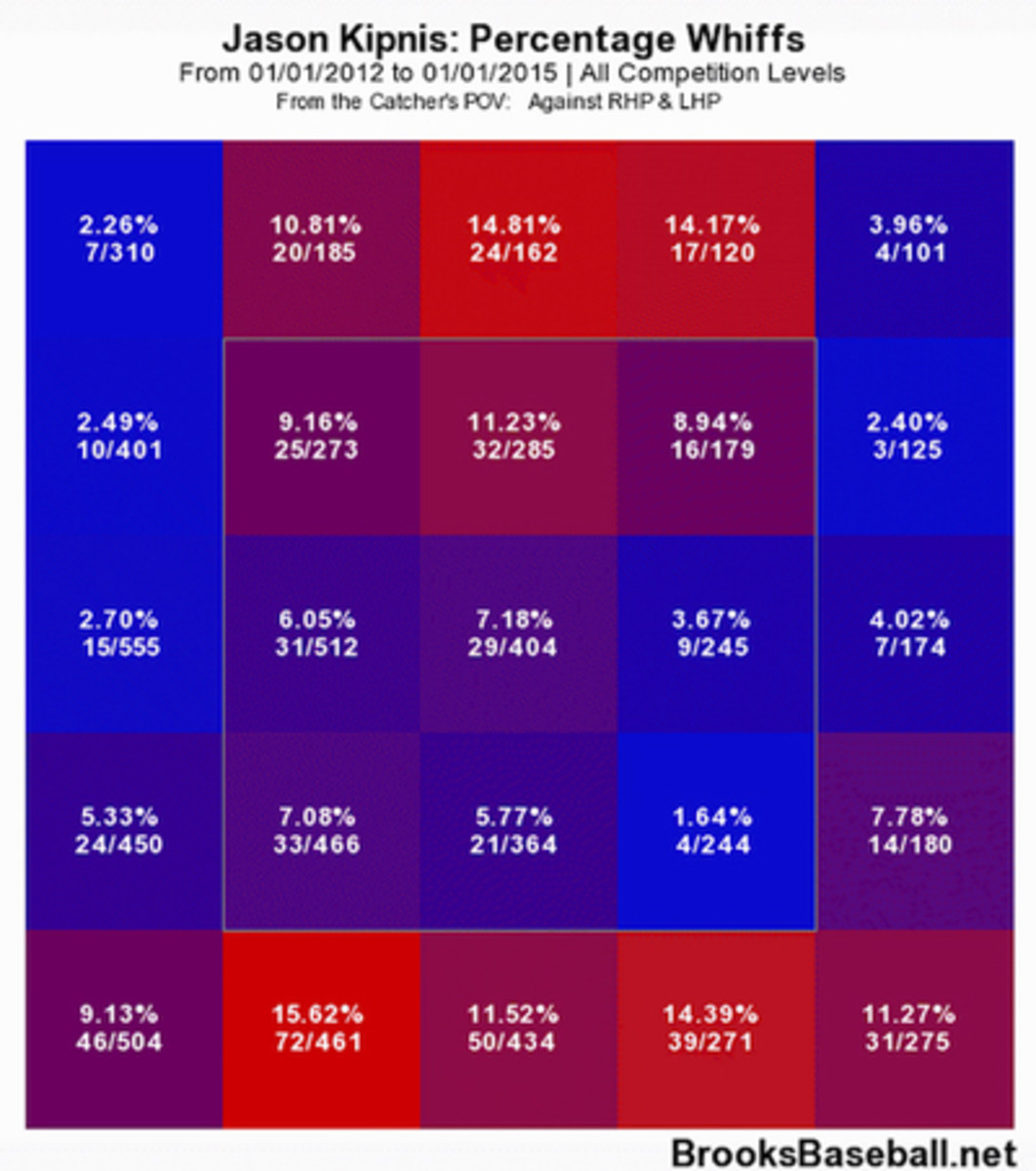
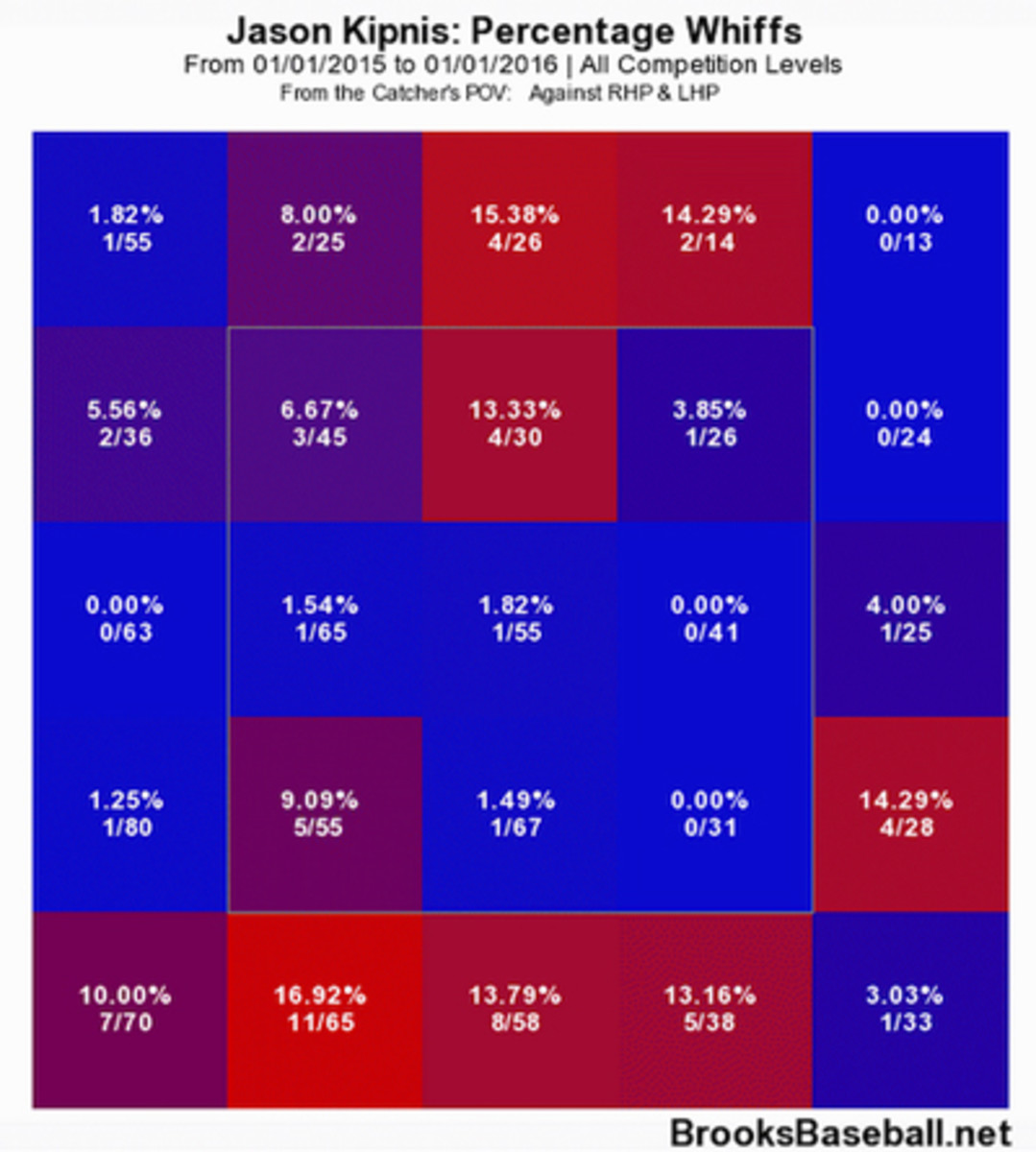
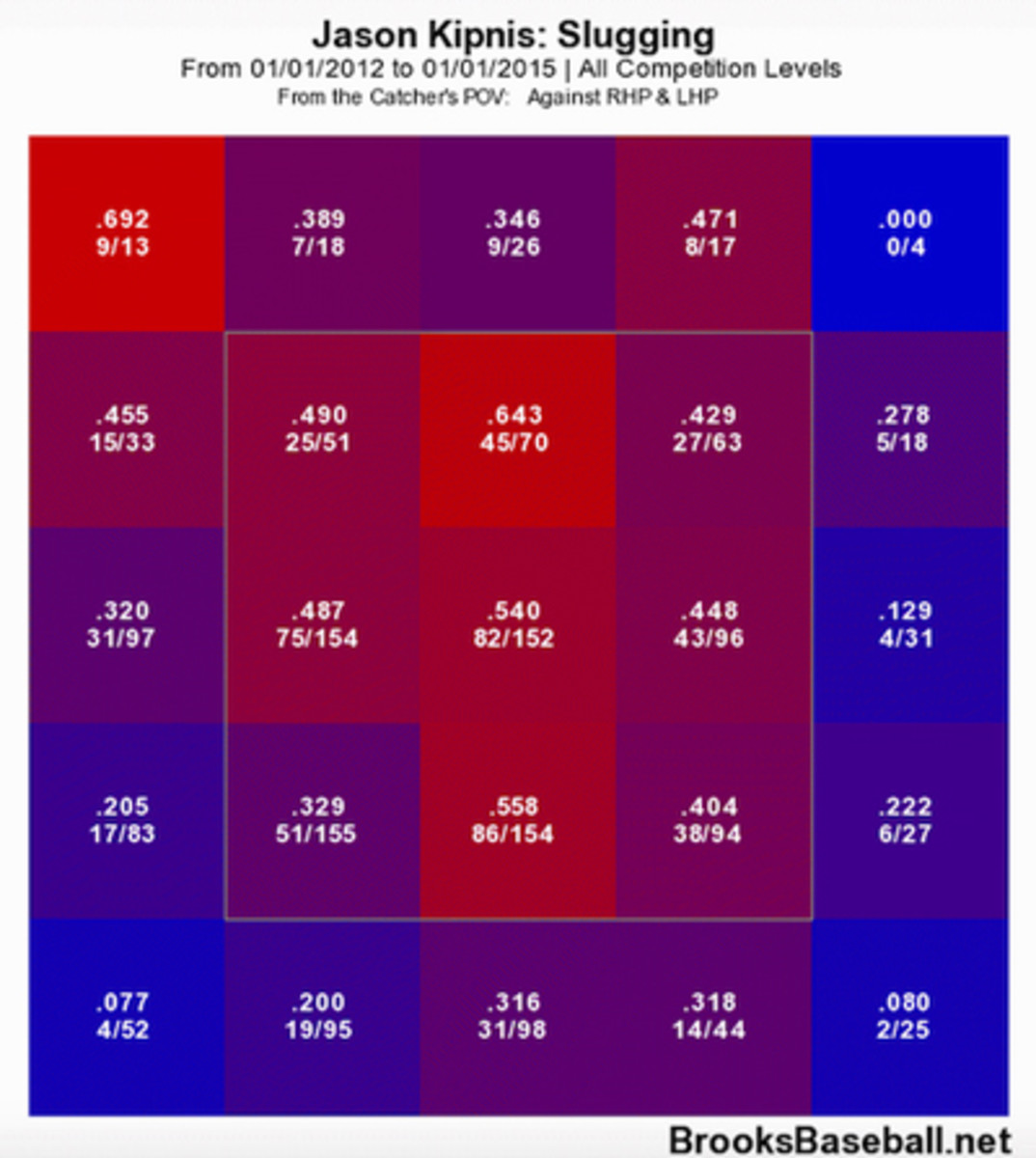
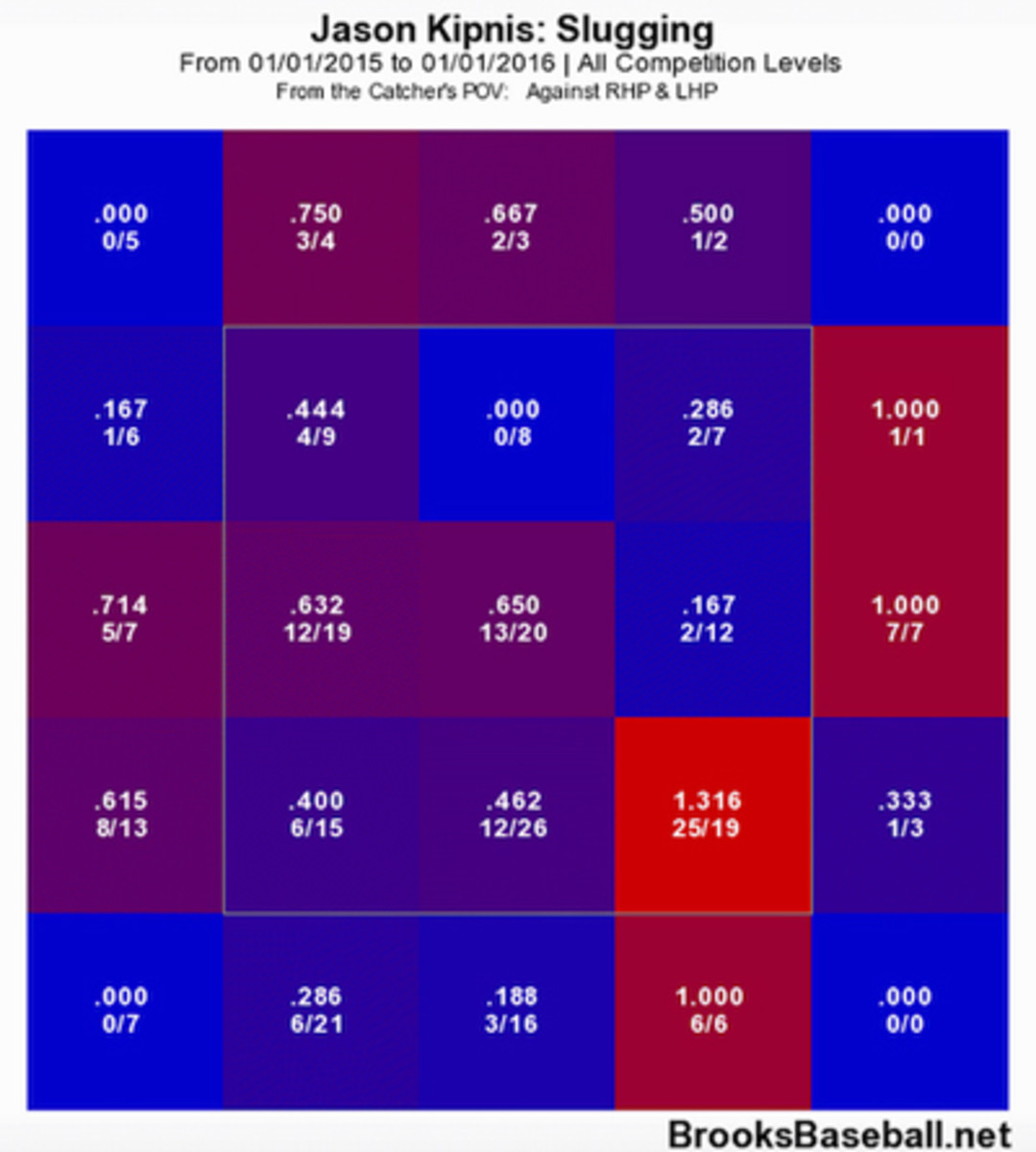
All it takes is a cursory glance at the numbers to see he has improved this season. The details? His whiff rate on pitches away this year is 5.5%, and his slugging percentage is .511. For 2012 through 2014, those were at 7.1% and .419, respectively.
It’s nearly impossible for any hitter to take a pitch on the outer third and yank it back to the pull field as a line drive. More often than not, the hitter will just roll over it for a routine groundout. That’s why it’s so important to go the other way with those pitches. Here’s one more visual representation of Kipnis doing just that.
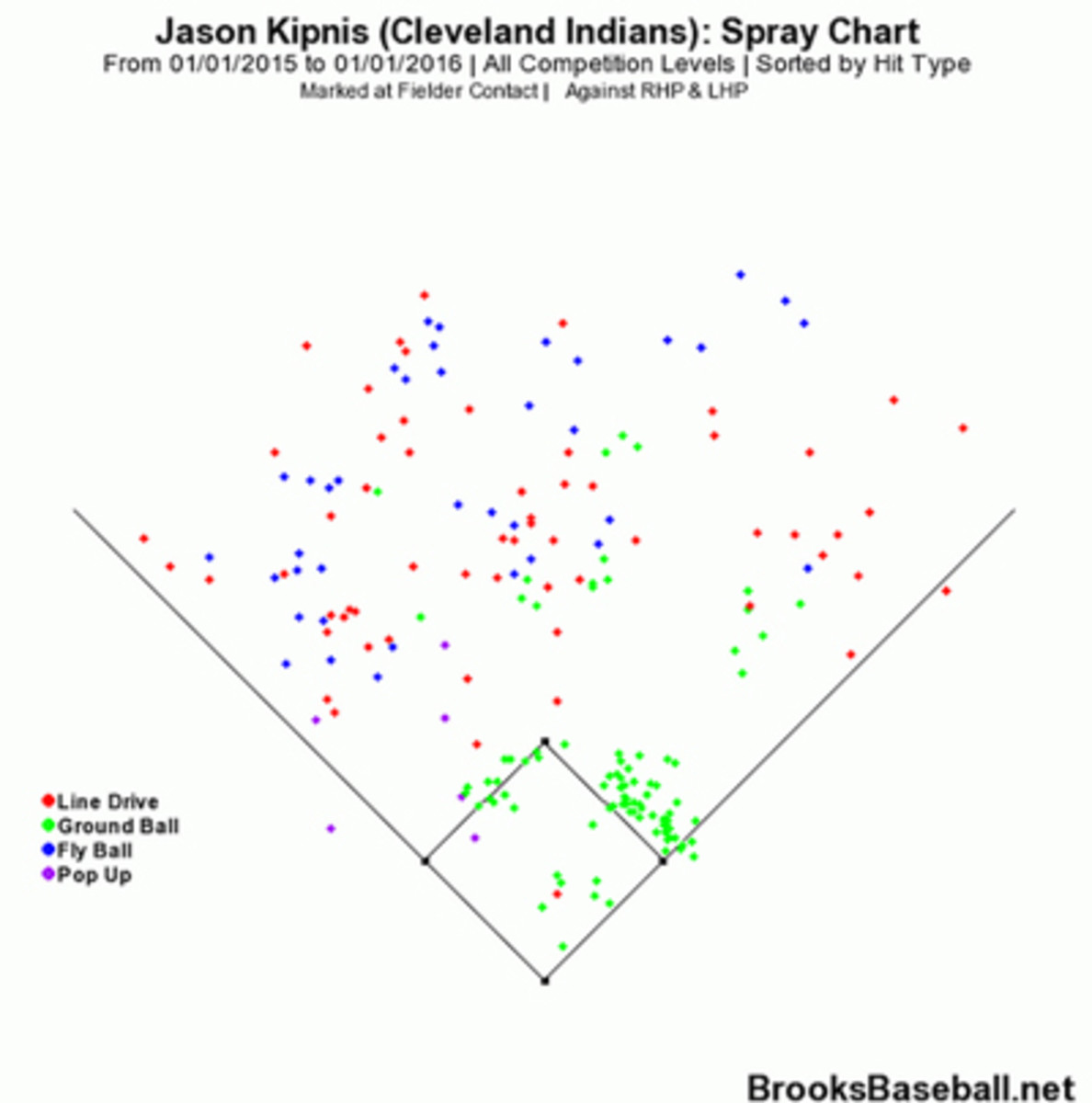
All those red dots are line drives, and you can see how many Kipnis has hit to left this season. His line-drive rate on pitches he hits to left field is 39.2%, up from a career rate of 31.3%. When he goes up the middle, he hits a line drive 31% of the time this year, compared with 23.8% for his career.
And now, let’s learn from our eyes. Kipnis, like most good hitters, likes to hit fastballs. Coming into this season, he was hitting .295 with a .443 slugging percentage against fastballs. This year, however, he’s all the way up at a .401 batting average and .627 slugging percentage. We already know that Kipnis’ strikeout rate is way down this season. His contact rate when he swings at pitches in the strike zone is 95% (career 90.4%), and it’s 68.8% on pitches out of the zone (career 66.6%). Meanwhile, his overall whiff rate, which has never been better than 6.7% for an entire season, sits at 5.7%. All of this points to a quicker bat.
Kipnis has always had an unorthodox setup at the plate, channeling his inner Mickey Tettleton by pointing the barrel of the bat straight back at the backstop before getting it into a more traditional position. Here’s an example of that from last season against the Twins.
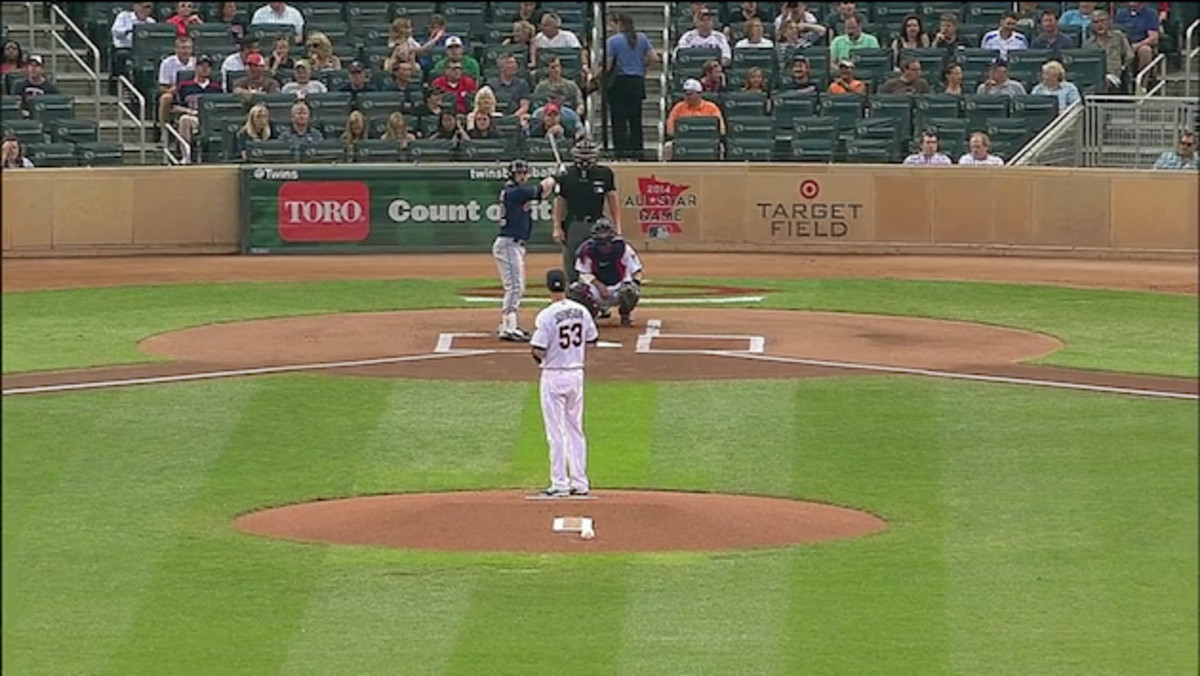
By time the pitcher goes into his windup, Kipnis has always had the bat in a conventional spot. He’s still doing that same starting maneuver this season, but there’s something different about it.
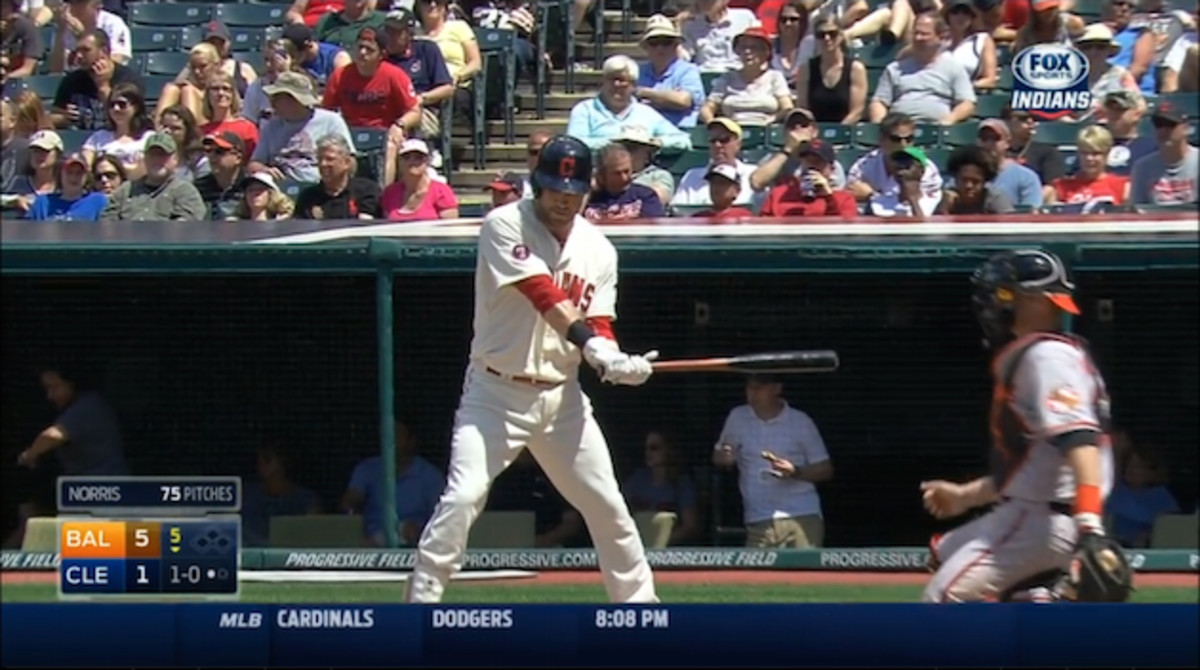
Kipnis uses it almost as a way to measure where he should hold the bat when the pitcher goes into his windup. Notice how much lower he is this season? Indeed, that carries right over to where he actually sets up when the pitcher comes set. Here’s a shot from that 2014 game against the Twins.
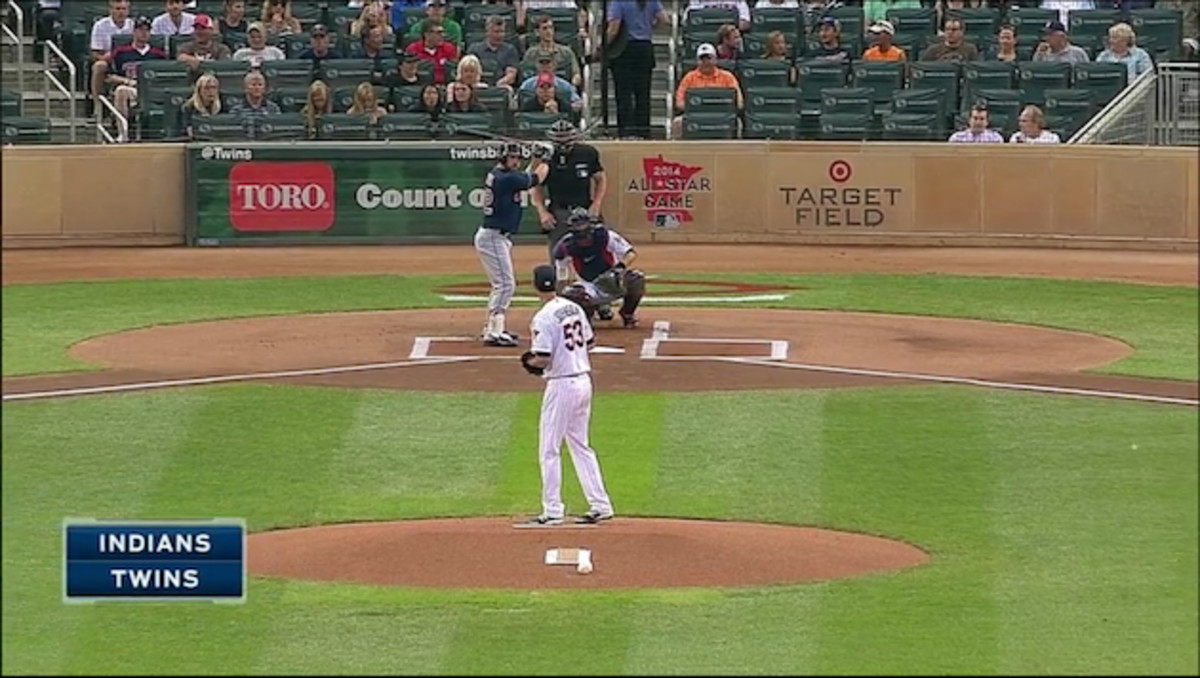
And here’s one from May 1 game against the Blue Jays.
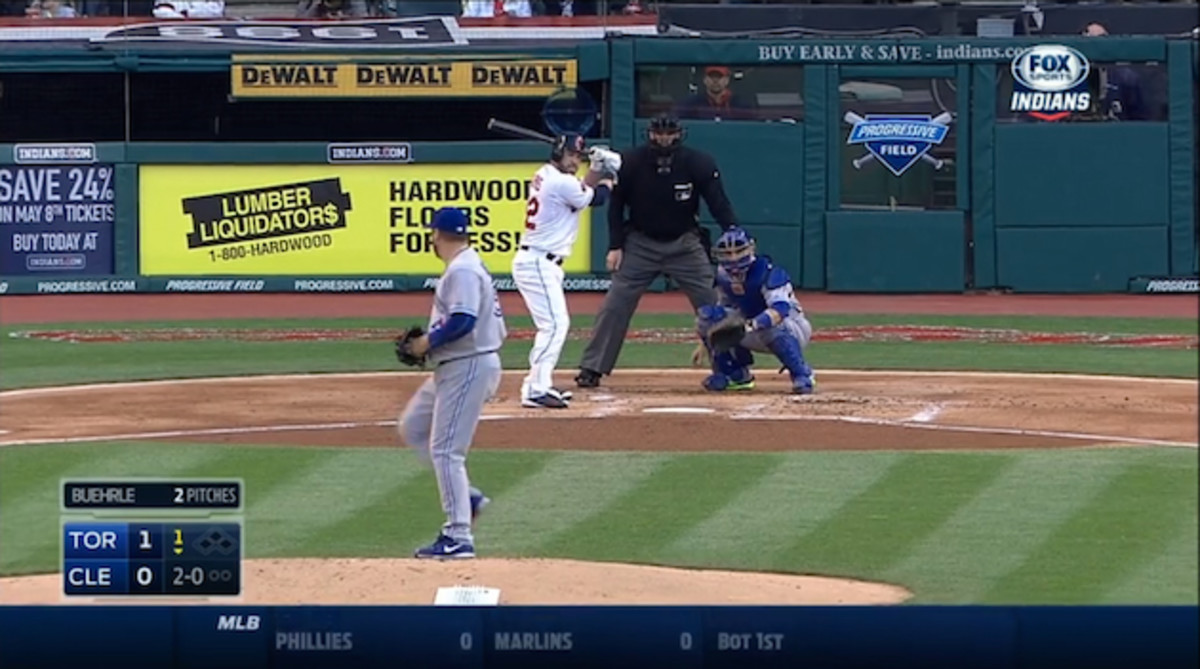
Notice how much lower his hands are this year? Let’s make it easier by taking a side-by-side look.

Last year, Kipnis's hands were in line with the top of his helmet. This year, they’re at about ear level. That’s likely helping him get the bat into the hitting zone earlier, which, in turn, makes him quicker to the fastball and helps him catch up to pitches on the outer third.
Fast forward to a game against the Orioles just last week. Here, Kipnis’s hands are even lower, coming straight off his shoulder.
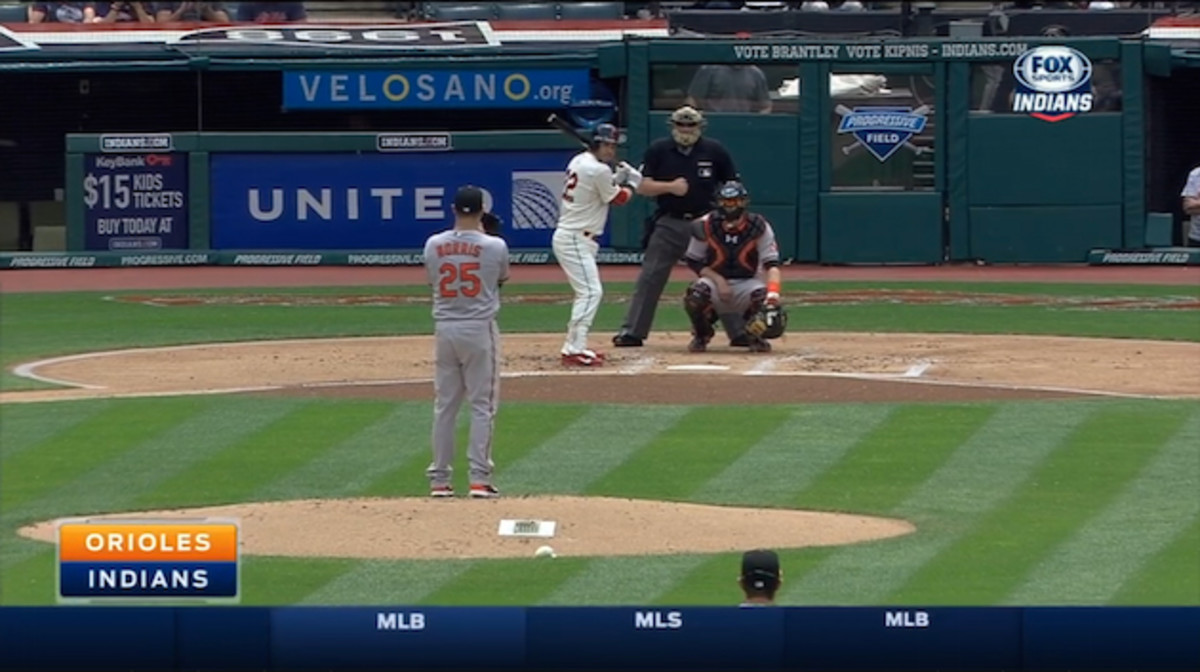
And now, putting it all together, let’s watch as Kipnis takes a pitch on the outer third and drives it to left-center for a double.
When we discuss a player who has made a dramatic year-over-year improvement, we like to talk about the idea of fundamental change. Is there something noticeable that he has adjusted, or are the vagaries of baseball simply working in his favor more this season? In Kipnis case it’s the former, and that means he can keep this going all season long.
